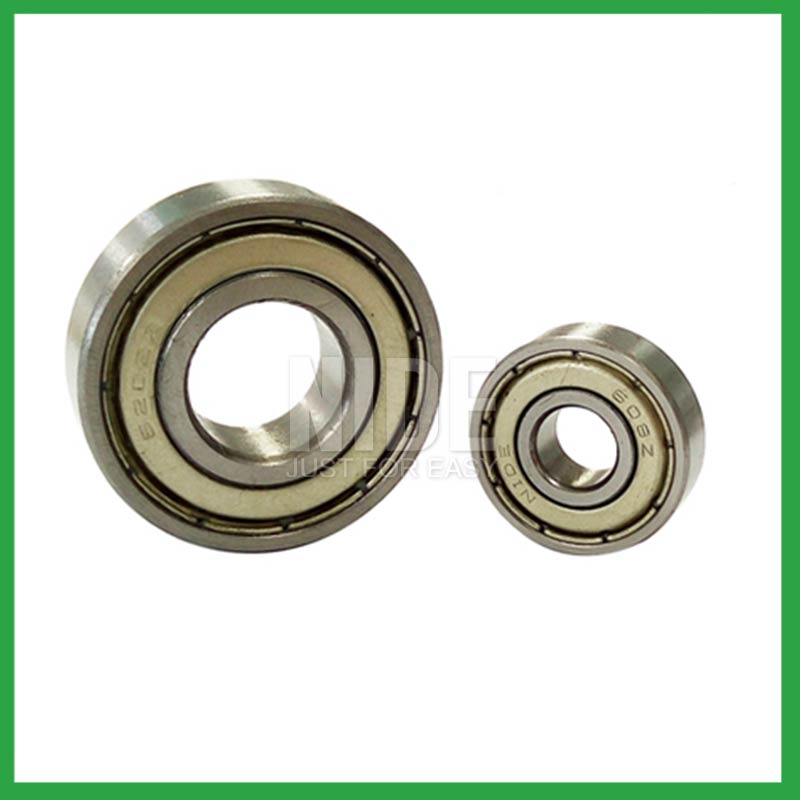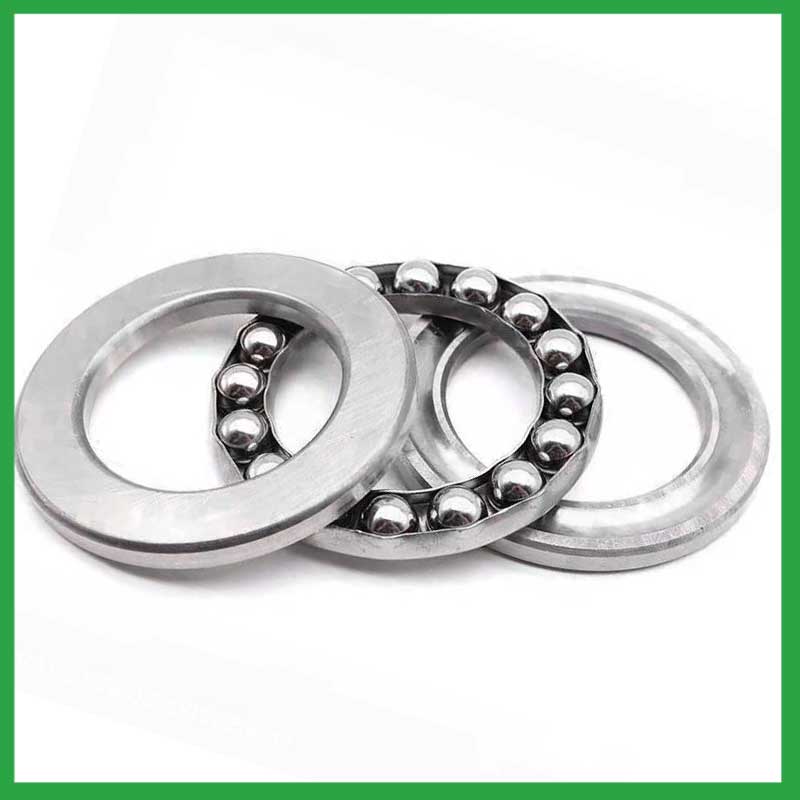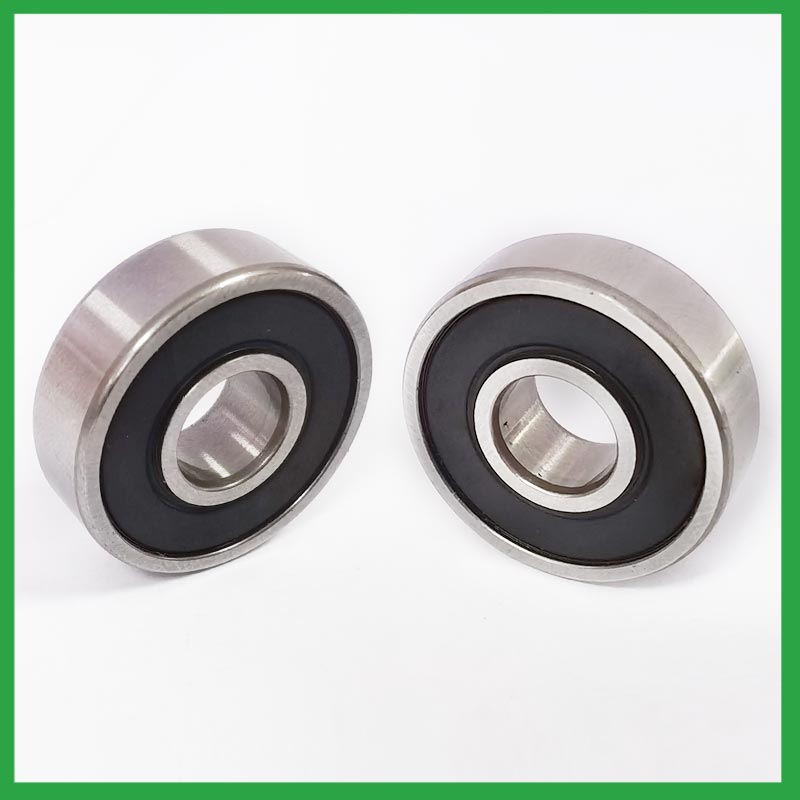PRODUCTS
CONTACT US
Ningbo Nide International Co., Ltd.
一一
· Contact person:Jack Zeng
· Mob/Whatspp/WeChat:0086-13738869026
· Email:emarketing@nide-group.com;marketing4@nide-group.com
· Add:No. 169, Wohushan Road, Daqi Subdistrict, Beilun District, Ningbo, China

Nide team could manufacture ball bearing as per customer’s drawing and samples.
If customer only has samples, we could also design drawing fo r our customer.
We also provide customized service.
Our ball bearing is widely applied the different industrials.
Ningbo Haishu Nide International Co., Ltd is a leading bearing manufacturing and trading company committed to providing high-quality and reliable bearing products and excellent services to global customers. Product scope: We offer thermal protector,ball bearing,motor cover and lamination,carbon brush,magnet,insulation paper,fan, etc. We also offer customized bearing solutions to meet specific customer requirements and applications. Quality control: We attach great importance to product quality, adhere to international standards and strict quality control processes. Our production facilities are equipped with the most advanced equipment and technology, and our bearings undergo strict testing and inspection to ensure they meet the highest quality standards.
We have obtained ISO9001 certification to ensure consistent quality throughout the entire product line. We strive to ship on time and flexibly process orders to ensure a seamless experience for our esteemed customers. As an international trading company, we cater to global customers. Our products are exported to various countries and regions, and we have established strong partnerships with reliable international logistics companies.

| Parameter | Information |
|---|---|
| Product Name | ball bearing experiment |
| Brand Name | NIDE |
| Place of Origin | Ningbo,China |
| Material | chrome steel, etc. |
| Structure | Deep Groove |
| Color | Customized Color |
| Delivery Time | 5-7days |
| Port | Ningbo/Shanghai |
| Export region | Asia,Europe,Oceania |
| Export Country | India,Brazil,South Korea,Cyprus,Turkmenistan,Qatar,Kazakhstan,Malaysia...etc |
| Application | food processing machinery, etc. |
| OEM/ODM | Yes |
| Size | Customized size |
| Stock | In Stock |
| Feature | Simple structure,Good wear resistance...etc |
| MOQ | 10 pieeces(Specific according to the model) |
| Certification | ISO9001,CE-stator coil forming machine,CE-stator coil winding inserting machine,etc |
| Supply Ability | 100000-500000 Piece/Pieces per Month |
| Lubricate | Oil Grease |
| Packaging Details | Suitable for sea transportation |
| Lead time (days) | 15-20 (To be negotiated) |
Please note: The above table data is for reference only. For specific information, please contact us.
ball bearing experiment require thrust for installation, which can be achieved by using a combination ring made of steel sleeve and transmission rubber, or by using an adjustment plate to tighten the bolt to form a combination ring installation structure.
During the disassembly process, the outer shell should be kept intact to avoid unnecessary damage;
When replacing installation components, attention should be paid to the accuracy of the support components to prevent deformation;
During the disassembly process, attention should be paid to protecting the surface quality of the ball bearing to ensure its performance;
During the operation, attention should be paid to removing surface dust to ensure the quality of the ball bearing.
Ball bearings have many advantages, making them highly competitive in the market.
Firstly, they are very durable and have good wear performance, making their service life longer than many other types of bearings.
Secondly, they are easy to install and can provide low friction performance in various applications.
Thirdly, they require a relatively low level of maintenance, making them cost-effective.
In addition, compared to many other types of bearings, their purchase cost is relatively low, making them an economical choice.




ball bearing experiment---FAQs Guide
2.Can ball bearing experiment operate in high-temperature environments like industrial ovens or furnaces, and how are they protected from heat-related damage?
3.About ball bearing experiment,What about the lead time?
4.How do preloaded ball bearing experiment enhance rigidity and reduce clearance in high-precision applications?
5.Are there ball bearing experiment designed for use in critical medical equipment?
6.How do ball bearing experiment contribute to the overall efficiency and energy savings in industrial machinery and transportation systems?
7.What are the standard sizes and dimensions of ball bearing experiment?
8.What are the considerations for selecting sealed or shielded ball bearing experiment to protect against contamination and retain lubrication?
9.How do preload adjustments in ball bearing experiment affect their performance and suitability for high-precision tasks?
10.What is a ball bearing?
11.Can ball bearing experiment be customized with special coatings or treatments to meet specific industry standards or regulatory requirements?
12.Are there ongoing research and development efforts aimed at improving ball bearing experiment materials, designs, and lubrication techniques?
1.What anti-corrosion coatings or treatments are available for ball bearing experiment used in marine or outdoor applications?
Corrosion Resistant Coatings.Whether ball bearing experiment are manufactured from stainless steel or from chrome, anti-corrosion coatings can be applied. Compared to the natural state of the base metal, these coatings make surfaces less chemically reactive. In their selection of treatments or coatings, some industries choose to consult with the manufacturer of the bearings they use. This is because surface engineering is a highly specialized undertaking. These coatings used for their anti-corrosion properties to protect bearings in harsh environments include the following:Passivation (of stainless steel),Carbide and titanium nitride,Galvanized zinc,Nickel plating,Cadmium plating,TDC (thin dense chrome).
2.Can ball bearing experiment operate in high-temperature environments like industrial ovens or furnaces, and how are they protected from heat-related damage?
ball bearing experiment are capable of working at temperatures up to +842°F (+450 °C). Special lubricants, seals and coatings make this possible by protecting the ball bearings from heat damage.
3.About ball bearing experiment,What about the lead time?
3-7 days for samples, 3-4 weeks for mass production.
4.How do preloaded ball bearing experiment enhance rigidity and reduce clearance in high-precision applications?
Enhance Rigidity: By applying a controlled axial force, preload increases the bearing's resistance to external forces and moments. This heightened rigidity is essential in applications where any deflection or misalignment must be minimized, such as in machine tools or robotic systems.

5.Are there ball bearing experiment designed for use in critical medical equipment?
Precision ball bearing experiment are among critical components in medical devices that are vital to ensuring patient safety. Correct choice of suitable ball and ring materials and the right product design can ensure high-precision bearings — and medical devices — have a long service life.
Precision bearings are used in a wide variety of medical devices including surgical power tools, ventilators and heart pumps — and patient safety depends on them all. Whatever the device, there is an onus on medical device original equipment manufacturers (OEMs) to ensure that the right type of bearings are chosen, and fit precisely into the application.
6.How do ball bearing experiment contribute to the overall efficiency and energy savings in industrial machinery and transportation systems?
The balls roll along the raceway, allowing for smooth rotation of the machinery or equipment. Ball bearings are used to support rotating, reduce friction and support radial and axial loads in high-load, high-speed applications where reliability and efficiency are critical.
7.What are the standard sizes and dimensions of ball bearing experiment?
ball bearing experiment size charts are widely available, and can be used to find the measurements of a specific bearing. Series 6200 and 6300 are the most commonly used, and typically range from 10 x 30 x 9 mm (. 394 x 1.181 x . 354 in) to 150 x 320 x 65 mm (5.906 x 12.598 x 2.559 in).
8.What are the considerations for selecting sealed or shielded ball bearing experiment to protect against contamination and retain lubrication?
First, the environment in which your ball bearing experiment operate in can help you identify potential contaminants, allowing you to select your shields or seals accordingly. For example, shielded bearings have a gap that can allow finer contaminants or water from washdown applications to enter the bearing and get into the raceways.The challenge for sealing bearings is to seal the bearing by protecting the bearing from contaminants and running efficiencies.

9.How do preload adjustments in ball bearing experiment affect their performance and suitability for high-precision tasks?
Benefits of Preloading a Bearing
Optimizes the ball spin to roll ratio.
Increases the rigidity of an application.
Protects from excessive ball skidding.
Decreases application vibration and sliding friction.
High running accuracy (even if load conditions keep changing)
Increases bearing load capacity.
10.What is a ball bearing?
A ball bearing is a type of rolling-element bearing that uses balls to maintain the separation between the bearing races.
The purpose of a ball bearing is to reduce rotational friction and support radial and axial loads. It achieves this by using at least two races to contain the balls and transmit the loads through the balls. In most applications, one race is stationary and the other is attached to the rotating assembly (e.g., a hub or shaft). As one of the bearing races rotates it causes the balls to rotate as well. Because the balls are rolling they have a much lower coefficient of friction than if two flat surfaces were sliding against each other.
Ball bearings tend to have lower load capacity for their size than other kinds of rolling-element bearings due to the smaller contact area between the balls and races. However, they can tolerate some misalignment of the inner and outer races.
11.Can ball bearing experiment be customized with special coatings or treatments to meet specific industry standards or regulatory requirements?
Yes, ball bearing experiment can be customized with special coatings or treatments to meet specific industry standards or regulatory requirements.
1. Corrosion-resistant coatings: These coatings are used to protect the bearings from corrosion caused by exposure to moisture, chemicals, and other corrosive substances.
2. High-temperature coatings: These coatings are used to improve the thermal stability and performance of bearings in high-temperature environments.
3. Food-grade coatings: These coatings are specially designed for applications in the food and beverage industry, where bearings come into contact with food, beverage, or pharmaceutical products.
4. Anti-static and non-conductive coatings: These coatings are used to dissipate static electricity, which can cause damage to electronic components.
5. Specialized lubrication treatments: Bearings can be treated with specialized lubricants that meet specific industry standards or regulatory requirements.
12.Are there ongoing research and development efforts aimed at improving ball bearing experiment materials, designs, and lubrication techniques?
A custom ball bearing experiment can satisfy almost any customer’s needs. Your application may need a needle roller or ball bearing, a radial or angular contact design, a plain carbon steel bearing with anti-corrosion coatings or stainless steel, a thrust bearing or a spherical bearing, tight or loose radial play, sealed or non-sealed designs


